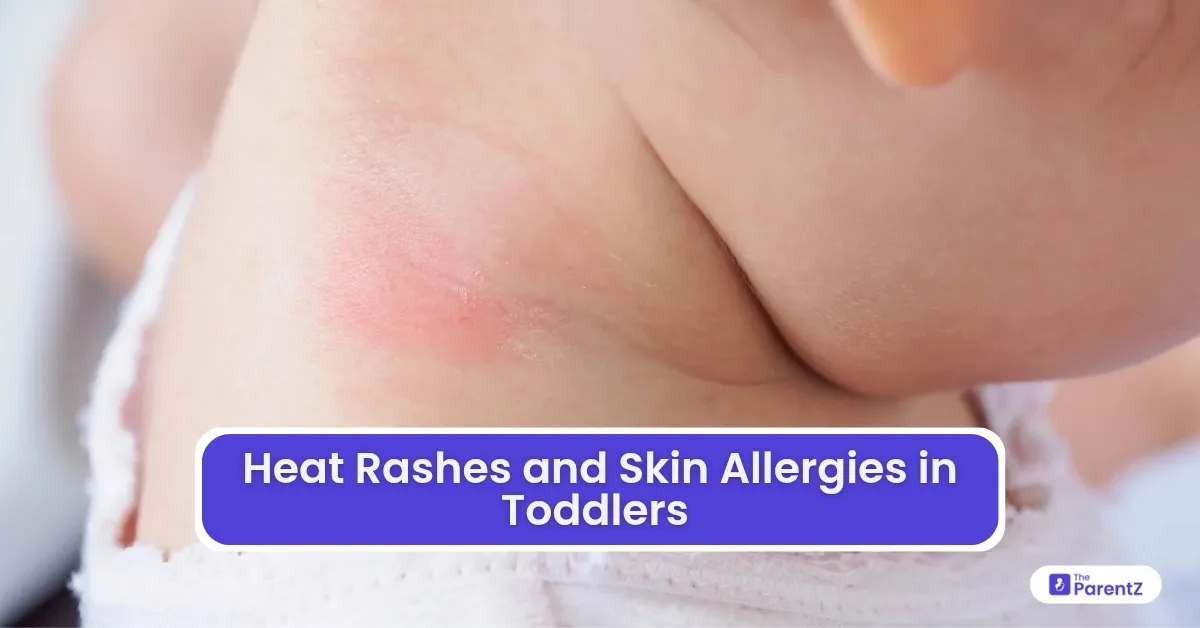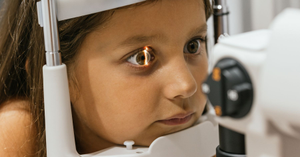Understanding Your Toddler’s Skin: A Parent’s Guide
As parents, we do everything we can to keep our little ones safe, from baby-proofing every corner to monitoring their meals. But sometimes, it’s the skin that speaks first. That angry red patch, the rash that came out of nowhere, or the constant scratching could mean your toddler is dealing with either heat rash or skin allergies.
Toddler skin is thin, delicate, and highly reactive to the environment. It’s also still developing its immune defense system, which is why skin issues are particularly common during this stage. Let’s understand two of the most frequent conditions, heat rashes and skin allergies, and how you can manage them gently and effectively.
Heat Rashes (Prickly Heat)
What Is a Heat Rash?
Heat rash, medically known as miliaria, occurs when your child’s sweat glands become blocked, trapping sweat under the skin. This can lead to tiny red or pink bumps, often accompanied by itching or a prickling sensation—hence the name “prickly heat.”
Causes
- Hot and humid weather
- Excessive sweating due to overdressing or fever
- Tight-fitting clothes or non-breathable fabrics
- Prolonged time in strollers, carriers, or car seats
- Immature sweat ducts in toddlers
Symptoms
- Small, red or clear blisters or bumps
- Commonly appears on neck, back, chest, underarms, diaper area, and inner thighs
- Itching or discomfort
- Child may seem irritable or fussy
Types of Heat Rash
- Miliaria crystallina – Superficial, clear fluid-filled bumps, no inflammation.
- Miliaria rubra (prickly heat) – Red, itchy rash that may sting.
- Miliaria profunda – Flesh-colored, deep-seated lumps (rare in children).
Treatment & Home Remedies
- Keep the child cool and dry.
- Dress in loose, breathable cotton clothes.
- Give cool baths with mild soap.
- Pat the skin dry—avoid rubbing.
- Use calamine lotion or pediatrician-approved aloe vera gel for relief.
- Keep the environment ventilated and cool.
Avoid: Baby oils, heavy lotions, or ointments that clog pores.
Skin Allergies in Toddlers
What Are Skin Allergies?
Skin allergies are immune responses to certain substances (allergens). When your toddler’s body recognizes an allergen as harmful, it triggers a reaction—often on the skin.
Common Allergens for Toddlers
- Foods: Milk, eggs, peanuts, soy, wheat
- Pollen, dust mites, pet dander
- Soaps, shampoos, or detergents
- Fabric (especially wool, synthetic materials)
- Metals like nickel in snaps or jewelry
- Insect bites or latex
Types of Skin Allergies
1. Atopic Dermatitis (Eczema)
- Chronic inflammatory condition.
- Dry, itchy, red, or scaly skin, often on cheeks, arms, legs.
- May flare with changes in weather, stress, or allergens.
2. Contact Dermatitis
- Occurs after skin contact with an allergen.
- Red, inflamed skin; may blister.
- Example: Rash after new detergent or lotion.
3. Hives (Urticaria)
- Raised, itchy welts or bumps.
- May come and go quickly.
- Can be triggered by food, medication, heat, or infections.
How to Identify a Skin Allergy vs. Heat Rash
| Feature | Heat Rash | Skin Allergy |
| Trigger | Heat, sweat | Allergen (food, fabric, product) |
| Appearance | Small red/clear bumps | Red patches, welts, or scaly areas |
| Common Areas | Neck, back, chest, folds | Face, limbs, diaper area |
| Duration | Resolves in a few days | May persist unless allergen removed |
| Itchiness | Mild to moderate | Moderate to severe |
Prevention Tips for Both Conditions
- Choose breathable fabrics: Opt for soft, loose cotton clothes.
- Avoid triggers: Identify and remove products or foods that may cause flare-ups.
- Keep skin moisturized: Use hypoallergenic, fragrance-free moisturizers.
- Use mild baby products: Stick to gentle, pediatrician-recommended brands.
- Limit sun and heat exposure: Avoid outdoor play during peak heat hours.
- Change diapers frequently and clean skin gently.
- Introduce new foods one at a time: This helps detect food allergies early.
When to See a Doctor
Call your pediatrician or dermatologist if:
- Rash is persistent, painful, or worsening
- Your toddler develops fever, pus-filled blisters, or extreme discomfort
- Over-the-counter treatments fail
- You suspect a food or environmental allergy
- Rash appears suddenly and spreads quickly
They may recommend skin tests, blood work, or refer you to an allergist if needed.
Medical Treatments
- Topical corticosteroids for eczema or allergic dermatitis (prescribed only)
- Oral antihistamines for hives or severe itching (like cetirizine or loratadine)
- Emollient therapy for eczema to restore the skin barrier
- Allergen elimination if the cause is identified
Always consult your child’s doctor before starting any medication.
Conclusion: Protecting Your Toddler’s Skin with Love and Knowledge
Your toddler’s skin is more than just adorable—it’s also a window into their health and environment. While heat rashes and skin allergies are common and usually manageable, staying aware of triggers, practicing gentle skincare, and seeking medical guidance when needed will help ensure your child stays comfortable and rash-free.
Your attention and care today will lay the foundation for your child’s healthy skin tomorrow.








Be the first one to comment on this story.